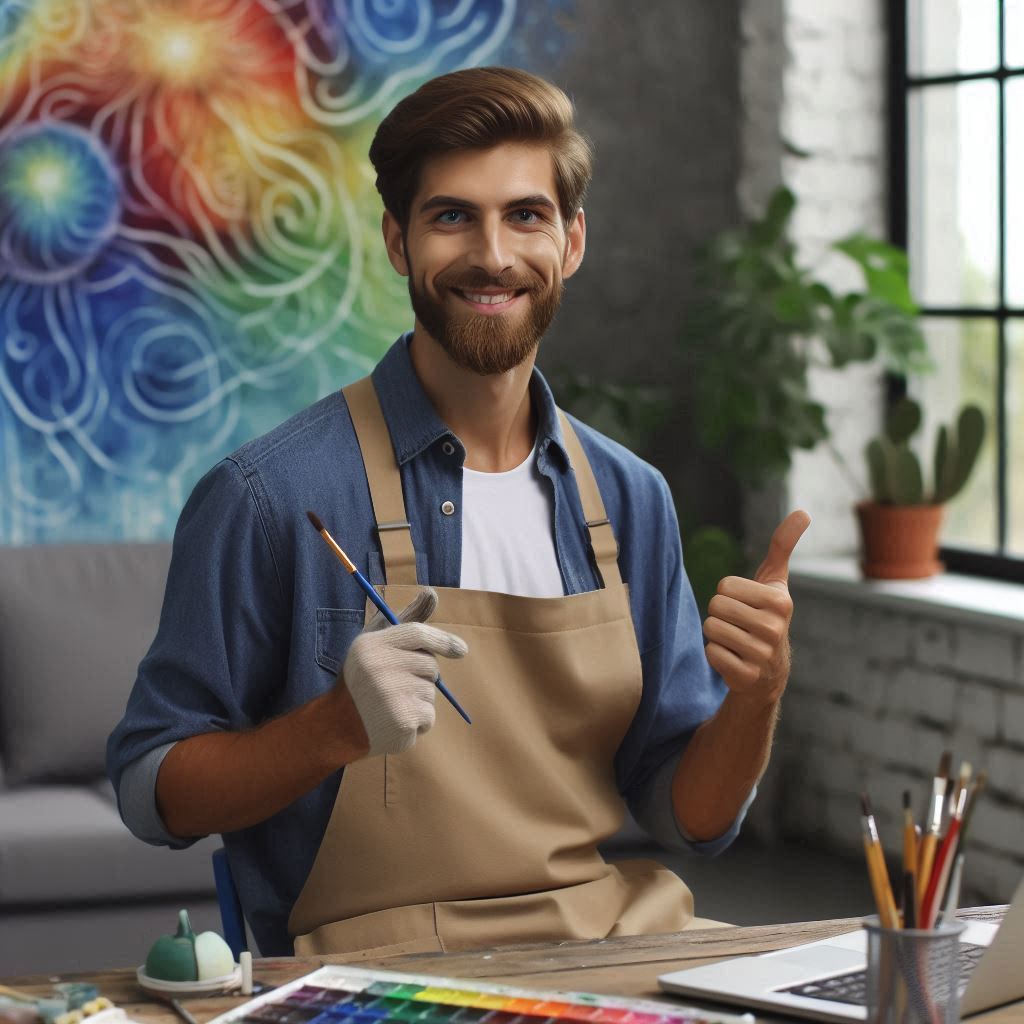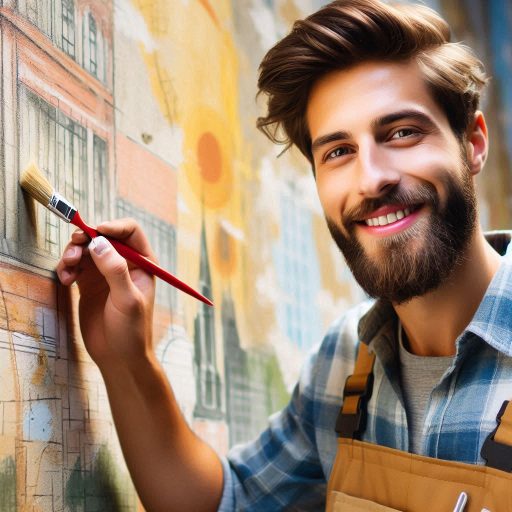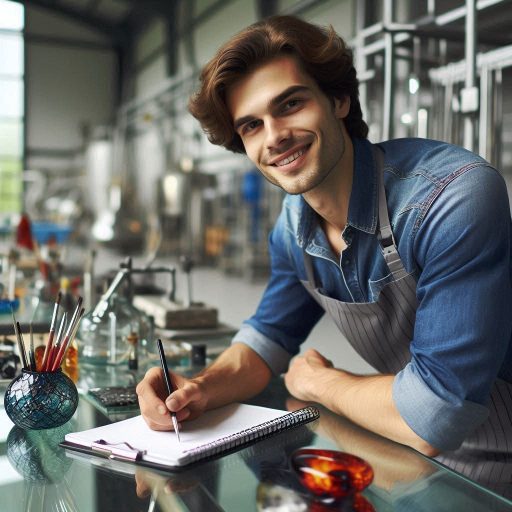Introduction
Community collaboration plays a crucial role in the success of mural projects.
Engaging local residents ensures that the artwork reflects their values and culture.
This collaboration fosters a sense of ownership and pride in the community.
When people participate in mural projects, they develop stronger connections with one another.
These projects promote unity and strengthen social bonds within neighborhoods.
Murals have a significant impact on local communities, beyond just their aesthetic value.
They can transform neglected spaces into vibrant, colorful environments that attract attention.
Beautifying public areas through murals increases the visual appeal of neighborhoods.
As a result, people feel more connected to their surroundings.
In addition to enhancing physical spaces, murals can also promote positive messages.
They serve as a platform for raising awareness about important social issues.
These powerful images inspire reflection and dialogue among community members.
Furthermore, murals often attract visitors and boost local economies.
People come to see the artwork, leading to increased foot traffic for nearby businesses.
This creates new opportunities for local entrepreneurs and artists alike.
By collaborating on mural projects, communities can create lasting, positive change.
Murals also have the power to preserve and celebrate local history.
They provide a way to document significant events or cultural heritage.
This strengthens a community’s identity and connection to its past.
The positive impact of murals extends far beyond their artistic value.
Transform Your Career Today
Unlock a personalized career strategy that drives real results. Get tailored advice and a roadmap designed just for you.
Start NowIn fact, community collaboration in mural projects is essential.
It not only beautifies neighborhoods but also fosters unity, promotes awareness, and boosts local economies.
Communities that work together on murals create lasting change, leaving a meaningful mark on their environment.
Selecting the Right Location
The importance of choosing a location that is accessible and visible to the community
Choosing the right location for mural projects is crucial.
An accessible and visible spot invites community engagement.
When people can easily find the mural, they are more likely to appreciate it.
Factors such as foot traffic, sunlight exposure, and potential obstacles for the mural project
Foot traffic plays a significant role in selecting a location.
Areas with high foot traffic, such as busy streets or community centers, ensure more viewers.
Murals in these areas can spark conversations and foster connections among community members.
Sunlight exposure is another important consideration.
Proper lighting enhances the mural’s colors and details.
Locations with adequate sunlight allow the artwork to shine, attracting more attention throughout the day.
Potential obstacles must also be assessed before finalizing the location.
Check for barriers like overhanging branches or nearby structures.
These obstacles can obscure the mural, reducing its visibility.
A clear line of sight ensures the artwork can be fully appreciated.
Community input is essential in the selection process.
Involve local residents in discussions about preferred locations.
This engagement fosters a sense of ownership and pride in the mural project.
Additionally, consider the mural’s theme and message when choosing a location.
Transform Your Career Today
Unlock a personalized career strategy that drives real results. Get tailored advice and a roadmap designed just for you.
Start NowThe artwork should resonate with its surroundings and reflect community values.
A well-placed mural can serve as a powerful reminder of local culture and history.
Safety should never be overlooked.
Choose a location that feels safe for artists and viewers alike.
Safety encourages more people to visit the mural and participate in community activities.
Selecting the right location for mural projects requires careful consideration.
Accessibility, foot traffic, sunlight exposure, and obstacles are key factors.
Engaging the community in this process enhances the mural’s impact.
Ultimately, a thoughtfully chosen location can transform a simple mural into a vibrant community landmark.
Read: Glass Art vs. Traditional Art Forms
Engaging with the Community
Strategies for reaching out to the community to gather input and ideas for the mural
Engaging with the community is key to the success of any mural project.
Effective outreach strategies help ensure the mural reflects local values and ideas.
To begin, start by directly reaching out to community members.
Flyers, posters, and emails can inform people about the project and its goals.
Hosting informal gatherings or attending local events helps to establish trust and opens up lines of communication.
Encouraging participation through community meetings, workshops, and social media platforms
Encourage participation by inviting everyone to community meetings.
These gatherings offer a platform for local voices to be heard and respected.
In meetings, actively seek ideas and suggestions for the mural’s design.
Listening closely to community input ensures the artwork aligns with their identity and aspirations.
Workshops are another great tool for engagement.
Transform Your Career Today
Unlock a personalized career strategy that drives real results. Get tailored advice and a roadmap designed just for you.
Start NowBy organizing collaborative painting sessions or design brainstorming events, community members can take part in the creative process.
Workshops also foster a sense of ownership and pride in the mural, making people feel more connected to the outcome.
Use social media platforms to reach broader audiences and invite input.
Create polls, share sketches, and ask for feedback to involve even those who cannot attend in-person events.
Social media serves as a space for ongoing dialogue, ensuring the community remains engaged throughout the mural project.
In summary, engaging with the community requires thoughtful outreach, inclusive meetings, interactive workshops, and consistent social media involvement.
These methods empower the community to actively shape the mural, ensuring it reflects their shared vision and culture.
Collaborating with Local Artists
Collaborating with local artists enhances the authenticity and cultural relevance of mural projects.
These artists possess deep connections to the community.
They understand the local culture, traditions, and history, which allows them to create meaningful artwork.
Their insights can shape themes that resonate with community members, fostering pride and ownership.
The benefits of working with local artists to bring authenticity and cultural relevance to the mural
Working with local artists also strengthens community ties.
Residents often feel more invested in a mural created by someone from their area.
This engagement can lead to a greater appreciation for the artwork and encourage community involvement in its creation and maintenance.
Additionally, local artists can draw from their networks, attracting more attention and participation to the project.
Ways to recruit artists and establish a collaborative working relationship
To recruit local artists, consider hosting an open call for submissions.
Share details about the mural project, including themes and goals, to attract interested artists.
Utilize social media platforms, community bulletin boards, and local art organizations to spread the word.
By reaching out through these channels, you can connect with diverse artists and showcase their work.
Establishing a collaborative working relationship is crucial for project success.
Transform Your Career Today
Unlock a personalized career strategy that drives real results. Get tailored advice and a roadmap designed just for you.
Start NowBegin by meeting with selected artists to discuss ideas and visions.
Encourage open communication throughout the project, allowing artists to express their creative thoughts.
Consider organizing workshops where community members and artists can collaborate on designs.
This approach fosters a sense of unity and shared purpose.
Providing a fair budget and resources also strengthens relationships with local artists.
Ensure they have access to necessary materials and support for their work.
By valuing their contributions and input, you create a positive and respectful working environment.
Basically, collaborating with local artists enriches mural projects, transforming spaces and building community connections.
Read: Exploring Modern Glass Art Trends
Securing Funding and Resources
Securing funding and resources is crucial for successful mural projects.
Artists and community leaders must strategize to obtain the necessary financial support.
Provide guidance on sourcing funding for materials, equipment, and artist stipends
Start by researching grants specifically designed for public art initiatives.
Organizations like the National Endowment for the Arts offer funding opportunities.
Local arts councils may also provide grants for community projects.
Crowdfunding platforms like GoFundMe can engage community members, encouraging small donations.
Create a detailed budget that outlines costs for materials, equipment, and stipends.
Clearly articulate how the mural benefits the community to attract potential funders.
Include specific quotes from artists to justify stipend requests.
Additionally, consider hosting fundraising events, such as art shows or workshops, where proceeds contribute to the mural project.
Explore options for partnering with local businesses, organizations, and government agencies for support
Local businesses often seek community involvement opportunities.
Transform Your Career Today
Unlock a personalized career strategy that drives real results. Get tailored advice and a roadmap designed just for you.
Start NowApproach them for sponsorships or in-kind donations, such as paint, brushes, or scaffolding.
Propose mutual benefits, such as advertising their brand on promotional materials.
Partnering with local organizations can also enhance project credibility.
Nonprofits focused on art or community development may provide grants or logistical support.
Engage with local government agencies for potential funding or resources.
Many municipalities have arts initiatives or community enhancement funds.
Attend local government meetings to advocate for your project and build relationships.
In essence, securing funding and resources for mural projects requires creativity and collaboration.
By actively seeking grants and forging partnerships, artists can bring vibrant murals to life.
Engaging the community in the funding process also fosters a sense of ownership.
Together, these efforts create impactful public art that enriches neighborhoods.
Read: How to Market Your Mural Art Business Effectively

Planning and Designing the Mural
Step-by-step process for developing a concept and design that reflects the community’s values and identity
Collaborating with communities on mural projects begins with a clear plan and thoughtful design.
The first step involves engaging community members to discuss ideas.
Conduct workshops or focus groups to gather input on themes and visuals.
This inclusive approach ensures the mural reflects community values and identity.
Next, develop a concept based on the feedback received.
Create initial sketches that illustrate the proposed design.
Share these sketches with community members for further feedback.
This iterative process fosters collaboration and strengthens community ownership of the project.
Transform Your Career Today
Unlock a personalized career strategy that drives real results. Get tailored advice and a roadmap designed just for you.
Start NowConsiderations for obtaining necessary permits and approvals from the local authorities
Consider the mural’s location carefully.
Analyze the surroundings and choose a space that resonates with the community.
A well-placed mural can enhance public spaces and attract attention.
Ensure that the design complements its environment while standing out.
After finalizing the concept, you must obtain necessary permits and approvals.
Research local regulations regarding public art installations.
Contact local authorities to understand the application process.
Prepare detailed documentation outlining the mural’s design, location, and community support.
This step is crucial to avoid any legal issues during installation.
Once you secure the permits, gather resources for the mural’s execution.
Collaborate with local artists who can bring the design to life.
Organize community volunteer days for painting, fostering a sense of unity and involvement.
Finally, celebrate the mural’s completion with a community event.
Invite residents to the unveiling, allowing them to connect with the artwork.
This celebration reinforces the mural’s significance as a symbol of community collaboration.
In a nutshell, planning and designing a mural involves a step-by-step process focused on community input, careful considerations for location, and compliance with local regulations.
Engaging the community ensures the mural truly represents their identity and values, creating a lasting impact.
Read: Essential Tools for Glass Artists
Implementing the Mural Project
Organize a Timeline
Start by creating a detailed timeline for your mural project.
Break it down into key phases: preparation, painting, and community engagement.
Transform Your Career Today
Unlock a personalized career strategy that drives real results. Get tailored advice and a roadmap designed just for you.
Start NowBegin with prep work, including selecting a location and gathering supplies.
Schedule painting sessions, ensuring adequate time for volunteers and artists to collaborate.
Incorporate community engagement events to foster involvement and excitement.
Promote these events through local media and social platforms.
Maintain flexibility in your timeline to accommodate unexpected changes.
Address Logistical Challenges
Weather conditions can impact outdoor mural projects.
Monitor forecasts closely and plan alternative dates for painting.
Prepare for possible delays caused by rain or extreme heat.
Implement safety protocols to protect both artists and volunteers.
Ensure everyone wears protective gear and follows safety guidelines.
Develop a volunteer coordination plan to manage tasks effectively.
Assign roles based on individual strengths and preferences.
Communicate clearly with all participants regarding expectations and schedules.
Involve the community in the planning process to build ownership.
Encourage feedback and suggestions during the mural’s design phase.
This collaboration fosters a sense of pride and connection.
Organize workshops or meetings to brainstorm ideas and finalize designs.
Document the entire process through photos and social media updates.
This creates excitement and encourages more people to get involved.
Engaging with local businesses can also enhance your project.
Transform Your Career Today
Unlock a personalized career strategy that drives real results. Get tailored advice and a roadmap designed just for you.
Start NowSeek sponsorships or donations to support supplies and materials.
Create partnerships that benefit both the mural project and the community.
This collaboration not only provides resources but also strengthens community ties.
By carefully organizing your timeline and addressing logistical challenges, you ensure a successful mural project.
Focus on collaboration and community involvement to create a vibrant mural that reflects local culture.
This process not only beautifies public spaces but also strengthens community bonds.
Celebrating the Unveiling
Unveiling a mural is a significant event that fosters community pride and engagement.
Hosting a community event is essential for celebrating this accomplishment.
Here are ideas for creating a memorable unveiling.
Host a Community Event
Plan a festive gathering to celebrate the mural’s completion.
Consider organizing a block party with food, music, and activities.
Invite local artists and musicians to perform, creating an engaging atmosphere.
Set up booths featuring local businesses and organizations to encourage community participation.
Additionally, prepare a short program to recognize the contributions of all involved.
Include speeches from artists, community leaders, and volunteers.
This acknowledgment builds connections and celebrates collective efforts.
Generate Buzz and Media Coverage
To promote the mural and generate excitement, leverage social media platforms.
Share behind-the-scenes photos and videos during the mural’s creation.
Encourage community members to post their experiences and tag the project.
Create an event page with details about the unveiling, inviting everyone to participate.
Transform Your Career Today
Unlock a personalized career strategy that drives real results. Get tailored advice and a roadmap designed just for you.
Start NowReach out to local newspapers, radio stations, and blogs to cover the event.
Offer interviews with the artists and community leaders, showcasing their stories.
Engage with influencers who can amplify your message.
Their support can attract more attendees and generate wider interest.
Consider creating a press release to share with media outlets, highlighting the mural’s significance and the community’s involvement.
All in all, a successful unveiling event celebrates the mural and the people who brought it to life.
By hosting a vibrant community gathering and effectively promoting it, you can foster pride and unity in your community.
Celebrate the creativity and collaboration that made this project possible.
Conclusion
Community collaboration in mural projects holds transformative potential.
It connects individuals, strengthens relationships, and creates a sense of ownership.
Through collaboration, residents can express their collective identity, culture, and values.
Murals not only beautify public spaces but also foster unity.
They tell community stories, reflect shared experiences, and inspire positive change.
This creative process allows everyone involved to contribute and feel valued.
Each mural serves as a reminder of the power of teamwork and shared vision.
Now is the time to take action.
You can begin your own collaborative mural project and engage with local residents.
Identify spaces that could benefit from a vibrant mural and gather interested participants.
Create partnerships with local artists, schools, and organizations to ensure diverse representation.
Organize workshops and discussions to brainstorm ideas and designs that reflect community interests.
Transform Your Career Today
Unlock a personalized career strategy that drives real results. Get tailored advice and a roadmap designed just for you.
Start NowBy involving residents, you’ll strengthen ties and enhance the neighborhood’s appearance.
Initiating a mural project is a powerful way to improve your community.
You will not only beautify public spaces but also inspire others to engage in community-led initiatives.
Collaborative murals become landmarks that unite residents and serve as symbols of pride.
The process offers opportunities for learning, understanding, and building lasting connections.
With thoughtful planning, your mural can leave a lasting, positive impact on everyone involved.
Take the first step toward transforming your community today.
Start your own mural project, engage with others, and make a difference.
You will experience firsthand the incredible power of collaboration.
Your mural can tell the unique story of your community while fostering a sense of belonging and pride.




